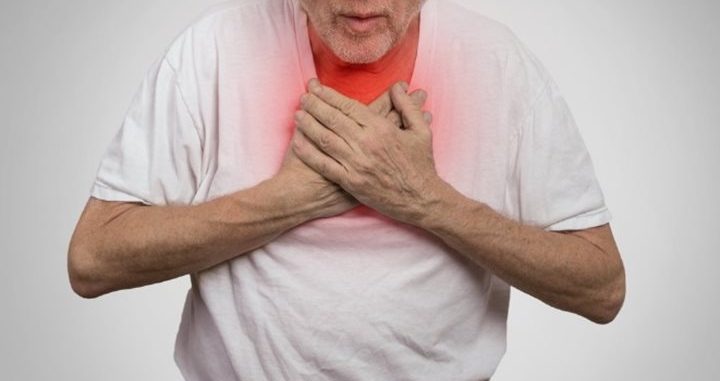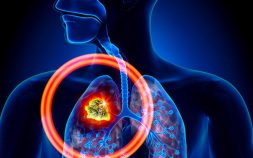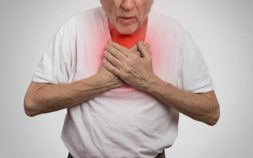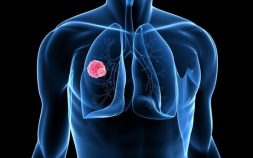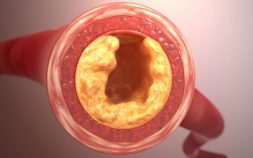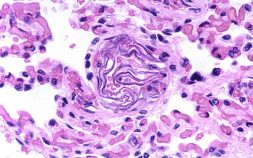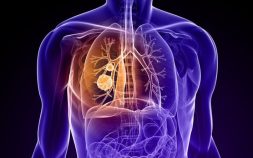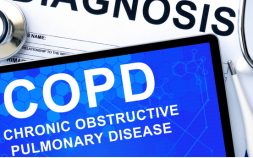-
COPD defined Have you ever become out of breath walking a few meters? Or wanted to try out for the hockey team but were afraid of becoming a panting outcast? Want to play hopscotch with your kids but can’t manage more than a few jumps without finding yourself absolutely...
-
The symptoms and signs of Chronic Obstructive Pulmonary Disease (COPD) include a heavy wheezing cough or a cough that brings forth large amounts of mucus (often called smoker’s cough); shortness of breath, especially with sports and chest tightness. Some of the symptoms and signs of COPD are identical to...
-
COPD is commonly misdiagnosed — former smokers are often told they have COPD when in reality they have another less common lung condition. Likewise, many persons who truly do have COPD aren’t diagnosed until the disease is far advanced and interventions are less effective. Tests If you have symptoms...
-
An embolism occurs when a vein or artery is blocked by an embolus. Not to be confused with a thrombus (stationary blood clot), an embolus is a mobile substance confined to the blood vessels. There are several types of embolisms, depending upon the affected part of the body. The embolus...
-
When something breaks loose into the bloodstream and travels around, it’s called an embolus. When the embolus comes to a place too small for it to pass through, it creates a blockage called an embolism. The cells on the other side can no longer receive blood flow and begin to...
-
Pulmonary hypertension is a potentially life-threatening disease that affects the arteries connecting the heart to the lungs. These blood vessels narrow over time, which leads to an increase in blood pressure that causes additional damage and stress to them. While this damage cannot be reversed, with proper treatment, the...
-
According to researchers at the University of Bloomington in Indiana and several other US research institutions, lung cancer could be a bigger threat to type 2 diabetics than to non-diabetics. In May of 2016, the British Journal of Cancer recorded the results of a study on 2,484 women whose...
-
Pulmonary embolism is a serious, potentially life-threatening medical emergency in which a blood clot blocks an artery that brings blood to one or both lungs. Since blood flow to the lungs is the only way oxygen can enter the bloodstream, pulmonary embolism requires treatment as soon as possible. The...
-
Lung cancer is a type of disease that starts in the small tissue of the lung. In many cases, it begins by forming in cells that are lining a person’s air passages. Lung cancer comes in two different forms known as small and non-small cell. In order to diagnose...
-
An embolism occurs when an embolus, or moving particle within the blood vessels, gets stuck somewhere in the cardiovascular system. Blood can’t move past the embolus, and the cells on the other side become oxygen deprived, or “ischemic.” Embolisms can occur anywhere from the foot to the lungs to...
-
Lung cancer is cancer that begins in the lungs. The lungs are located in the chest and are responsible for taking in oxygen and removing carbon dioxide. Unfortunately, when cancer grows in these organs, it is a very serious disease. In fact, lung cancer is the leading cause of...
-
An asthma diagnosis can be limiting and frustrating at times. It may necessitate you to make some adjustments in your lifestyle. Many patients become extremely overwhelmed, and they let the disease control the way they live their lives. With all the advancements in treatment and the free flow of...
-
Lung cancer is a type of disease that starts in the small tissue of the lung. In many cases, it begins by forming in cells that are lining a person’s air passages. Lung cancer comes in two different forms known as small and non-small cell. In order to diagnose...
-
Asthma causes swelling and inflammation in the bronchial tubes of the lungs, resulting in asthma attacks. During an asthma attack, the bronchial tubes swell. When the air can’t flow through the lungs, the symptoms such as shortness of breath, tightness in the chest, coughing, and wheezing occurs. There have...
-
Lung cancer is a cancer that begins in lungs. The lungs are located in the chest and are responsible for taking in oxygen and removing carbon dioxide. Unfortunately, when cancer grows in these organs, it is a very serious disease. In fact, lung cancer is the leading cause of...
-
There are three vital things you should know about lung cancer: it is an equal opportunity “killer;” non-small cell lung cancer (NSCLC) is the most common type and grows and spreads more slowly than other affected cells; and recent findings show that lung cancer survival rates have improved. Therefore,...
-
Lung cancer causes more deaths worldwide than any other form of cancer. There are two main forms of the disease: small cell and non-small cell, and the vast majority of cases (85 to 90 percent) belong to the latter category. Small cell (or oat cell) tumors often originate in...
-
Chronic obstructive pulmonary disease, or COPD for short, is a progressive disease without a cure. With this condition, the lungs undergo severe damage, primarily through smoking, which is irreversible. This damage then causes problems with breathing. You may also be familiar with the terms chronic bronchitis and emphysema, which...
-
Chronic obstructive pulmonary disease, also known as COPD, is a progressive disease that usually makes it difficult to breathe. “Progressive” simply means that this illness gets worse with time. COPD might cause coughing which produces large amounts mucus, wheezing, chest tightness, and shortness of breath. Cigarette smoking is currently the...





